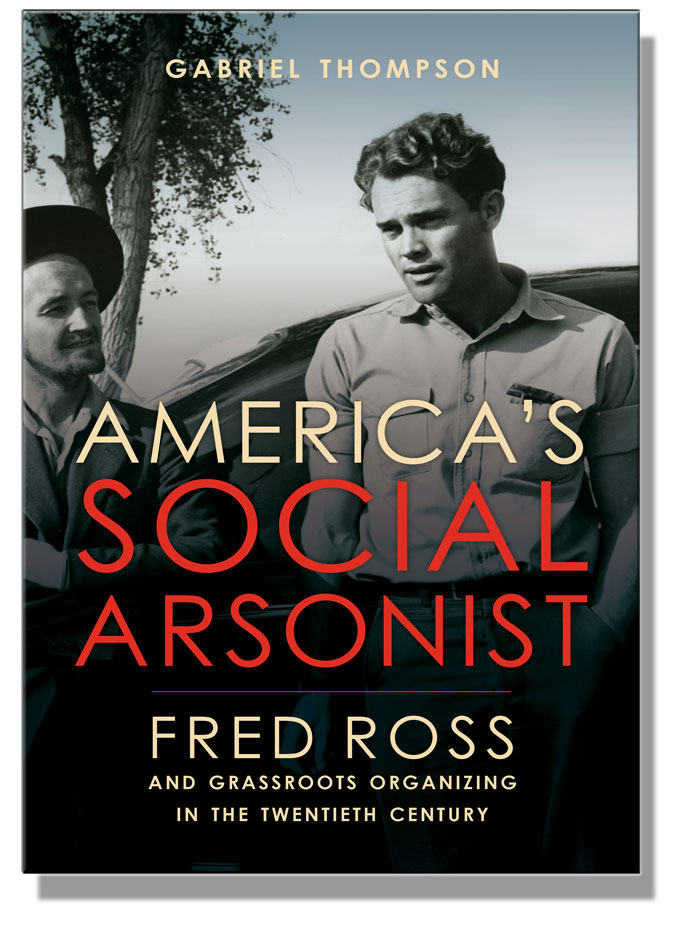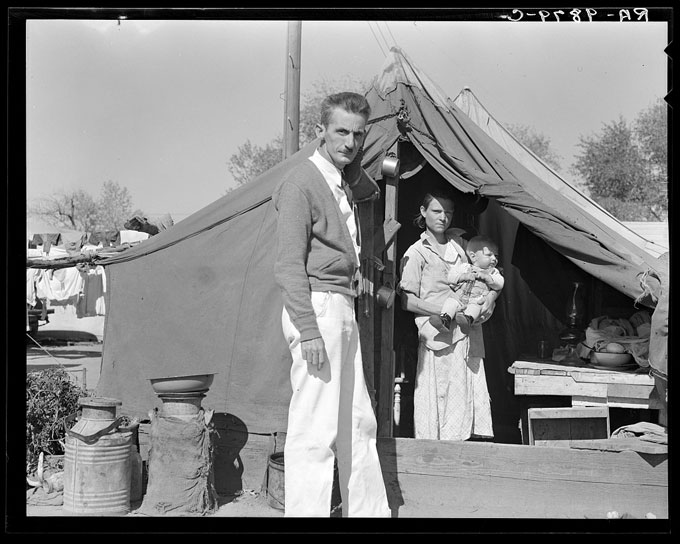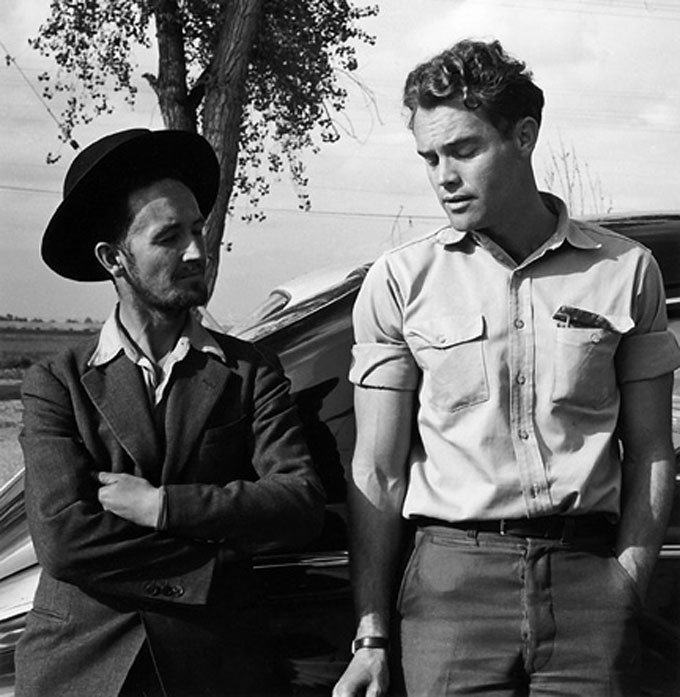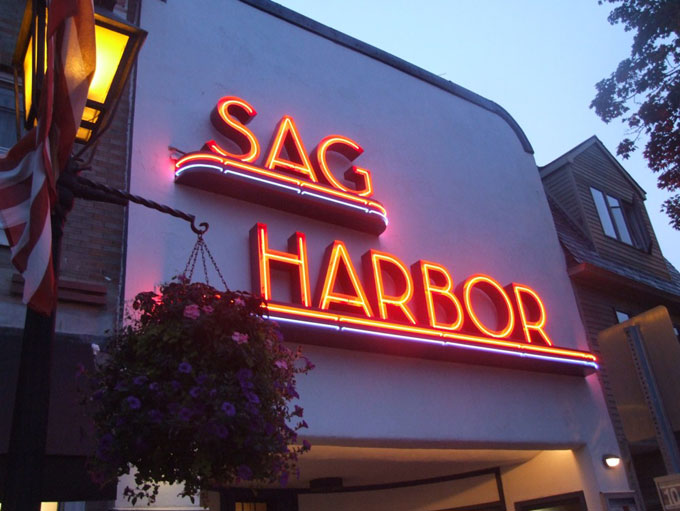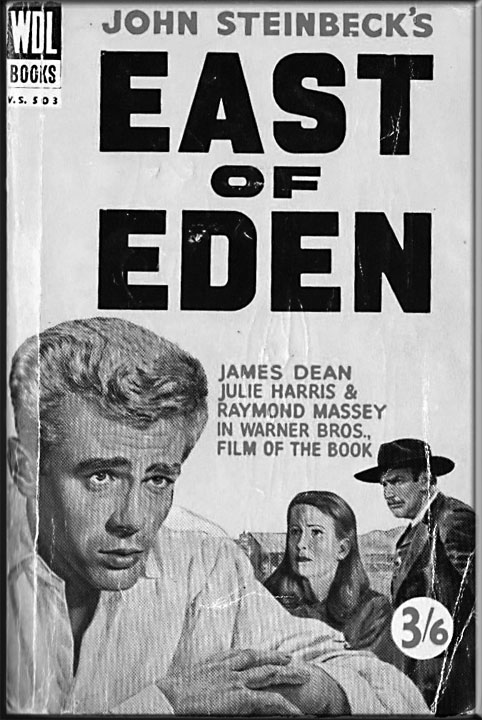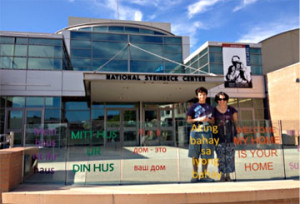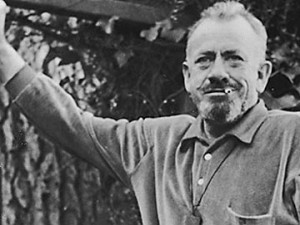Barack Obama’s time as a community organizer was brief. But the long career of Fred Ross, the legendary community organizer who followed Tom Collins and Harold Tefft at the migrant camp portrayed in The Grapes of Wrath, extended from the 1930s to the era of Cesar Chavez, the California labor leader who made boycott a household word in America, 25 years after Steinbeck wrote his novel. The versatile life and lasting influence of Ross—a teacher, social worker, and activist for workers’ rights—are the subject of America’s Social Arsonist: Fred Ross and Grassroots Organizing in the Twentieth Century by the journalist Gabriel Thompson, published this week by the University of California Press. The following excerpt from the book was chosen by the author and is used with his permission.—Ed.
On his first day at the Arvin camp, Ross was shown around the camp by departing manager Harold Tefft. When a drunk resident approached and let loose with a string of curses, Tefft shoved the man to the ground and began pummeling him in the face.
Ross had unknowingly walked into a firestorm. Several weeks earlier, more than a hundred residents had signed a handwritten petition requesting the removal of Tefft and sent it to the FSA [Farmer Security Administration] headquarters in San Francisco. They accused him of entering the women’s bathroom without warning, ignoring decisions made by the camp council, and “beating the Osborne child with a handsaw.”
It was an ironic turn of events at what had been considered the crown jewel of the migrant camps. The first manager of Arvin was the brilliant Tom Collins, a slight man with a square jaw and finely trimmed mustache who took the Okies’ cause as his own. Raised in an orphanage, Collins had trained for the priesthood, managed a school system in Guam, and aspired to write novels (one of his unfinished books was titled “Oklatopia”). “He is one of the most unusual persons I have ever met,” wrote one FSA director, “with infinite capacity for good work and at his best when he is nearly killed with work.”
The first manager of Arvin was the brilliant Tom Collins, a slight man with a square jaw and finely trimmed mustache who took the Okies’ cause as his own.
When John Steinbeck visited the camp while gathering material for The Grapes of Wrath, he was impressed by what Collins had accomplished. “I want to thank you for one of the very fine experiences of a life,” he wrote. “I hope I can be of some help.” Collins became Steinbeck’s “migrant liaison,” with the pair traveling the valley to visit and assist desperate farmworkers. (It was while traveling with Collins that Steinbeck helped families who had been washed out during the tremendous floods of 1938.) Steinbeck would partially dedicate The Grapes of Wrath “to Tom who lived it,” and he portrayed the Arvin camp as a utopian paradise.
In the book, the Joads have fled a squatter camp to arrive at Weedpatch in the middle of the night, exhausted and filthy. A security guard welcomes them and explains the basics: the camp has running water and toilets; police aren’t allowed inside without a warrant; an elected committee of workers makes the rules. The Joads, who have thus far suffered one misfortune after another, are incredulous. Tom asks the guard, “You mean to say the fellas that run the camp is jus’ fellas—camping here?” The guard replies, “Sure. And it works.”
That utopia, no doubt idealized by Steinbeck, was in shambles when Ross arrived. The elected council was moribund and most of the recreational events, which Collins believed so central to creating a sense of community, had been scrapped. In his last report, Tefft did hit one positive note, writing that he had been warmly received after addressing a group of farmers, who appreciated his efforts “to cooperate with them in furnishing labor at the established wage scale.” The established wage scale was miserly. Tefft, essentially, was being thanked by growers for convincing camp residents to work for low wages without complaint.
That utopia, no doubt idealized by Steinbeck, was in shambles when Ross arrived.
Ross set out to repair the damage done by Tefft. Although the manager held ultimate power at the camp, on both a personal and professional level Ross needed the residents to like him. “I wouldn’t have been happy if even one person had been against me,” he later said. After moving into the manager’s quarters, he began to visit residents at the crack of dawn, before they headed out to the fields, moving from tent to tent, making small talk, and drinking huge amounts of coffee. It was the perfect training ground for an organizer. The camp had its share of stubborn folks—it took a certain amount of stubbornness to keep going after the hardships they’d endured—and while they appreciated good company as much as the next person, they were weary of patronizing attitudes. “Hypocrisy, pretense, insincerity, lack of interest in their problems and in them—these evils we can never hide from them,” wrote Collins, who wasn’t immune from occasionally striking patronizing tones himself. While sympathetic to the plight of the migrants, some in the FSA viewed them as stunted creatures unable to grasp basic concepts, or mounds of so much clay that reformers needed to reshape in their image. The buzzword of the day was “rehabilitate,” which captured the arrogance of this position. One supervisor, visiting Arvin in 1936, wrote that the migrants “seem almost childlike at times, as indeed they are.” They weren’t childlike, of course. They were poor.
Like Collins, Ross was fascinated by the migrants. “What started out as a way to win them [over],” Ross later said, “almost immediately became a driving interest to be around them, learn about them, pick up their stories. If you are really interested, listening comes naturally.” As he had with Mulligan, Ross chatted for hours, soon becoming a member of what he called the “spit and argue” club, an informal group that held long, rambling discussions. His curiosity and sympathy won many over. One resident called the previous managers at Arvin “educated men, who have never done any real work,” and likened them to “dictators.” He considered Ross, on the other hand, “an educated man but when he came here he acted as one of the boys. . . . He didn’t act one bit better than his staff or the people in the camp. And he’s always got time to say a few words to you.”
Within months, the visits were bearing fruit. “Practically all traces of the recent difficulties at Arvin Camp have disappeared,” wrote a supervisor after visiting. “Mr. Ross is doing an excellent job of promoting camper recreation and activities.” By the fall, communal events were held every night of the week, a new council was elected, a co-op store was formed, and a camp newspaper, the Tow Sack Tattler, was being published.
Luke Hinman showed up at Arvin in early September, just as the cotton harvest was getting under way. Tall and skinny, wearing a ragged leather jacket and driving a junk heap of a car, he looked every bit the hardened radical he was. Five years older than Ross, the ex-Wobbly had joined the Communist Party, volunteered for the Abraham Lincoln Brigade, and returned from Spain to fight on behalf of farmworkers. He was coming off a weeklong stint in jail, the result of supporting striking workers in Marysville, and asked Ross if the camp’s community hall was available.
Hinman was the statewide director of the United Cannery, Agricultural, Packing and Allied Workers of America (UCAPAWA). Established in 1937 and affiliated with the upstart
Congress of Industrial Organizations (CIO), the union sought to organize the “unskilled” field workers long ignored by the American Federation of Labor (AFL). Had he arrived earlier in the year, Hinman would have been sent packing: under Tefft, the camp council had banned union meetings and forbidden the posting of union material on the bulletin board. But the arrival of
Ross signaled a change in politics. When growers publicly burned The Grapes of Wrath and Kern County pulled it from libraries and schools, residents at the camp sent a letter of protest, while passing a well-worn copy of the banned book from tent to tent. The editor of the new camp paper was a CIO activist, and he filled the pages with militant slogans—“An Injury to One Is an Injury to All”—and poems with unsubtle titles like “Join the Union.” The council voted to allow the CIO inside, and soon Hinman and another organizer, Wyman Hicks, were spending their nights talking union with residents in their tents. Ross often poked his head in to listen, amazed at the audacity of their project: two broke but fearless organizers, responsible for the entire state, were itching for a fight against the powerful growers. When it got late, Hinman and Hicks bedded down on the patch of grass beneath Ross’s window.
The battle lines being drawn were over what constituted a “fair wage” for cotton pickers. California’s newly elected liberal governor, Culbert Olson, had pegged muckraking journalist Carey McWilliams to be the state’s commissioner of immigration and housing. McWilliams, no friend of big growers, moved quickly, tripling the number of labor inspectors and hosting a public hearing in Fresno, where he determined that a fair cotton rate for the season was $1.25 per hundred pounds picked. The growers balked, offering 80 cents. While the state couldn’t enforce the higher wage, McWilliams promised that any worker who refused to work for less wouldn’t be cut from the relief rolls. Big growers “screamed like banshees,” but McWilliams didn’t back down. It was such policies, and his hard-hitting exposé of big agriculture, Factories in the Field, that would cause the Associated Farmers to label McWilliams “Agricultural Pest No. 1 in California, outranking pear blight and boll weevil.” In the coming years, the paths of Ross and McWilliams would frequently intersect, with Ross coming away deeply influenced by McWilliams’s analysis of farm labor. Decades later, Ross would insist that United Farm Workers volunteers read Factories in the Field to better appreciate the nature of the beast they were up against.
The battle lines being drawn were over what constituted a ‘fair wage’ for cotton pickers.
UCAPAWA launched a strike in Kern County on October 9, 1939, calling for the $1.25 wage rate. The strike, coming soon after publication of The Grapes of Wrath, caught the attention of the John Steinbeck Committee to Aid Agricultural Organization, which was chaired by Helen Gahagan Douglas, a future congresswoman and wife of movie star Melvyn Douglas. Members of the committee raised money for UCAPAWA and traveled to the Arvin camp to hand out clothing and shoes. Also visiting was a frizzy-haired, guitar-toting Woody Guthrie, who, along with movie star Will Geer, became a frequent guest at the camp. Guthrie was coming off a stint as the “hobo correspondent” for a newspaper called the Light, for which he had traveled the state to visit migrant camps. Many of the migrants knew him from his radio program in Los Angeles, The Oklahoma and Woody Show, and at Arvin he stood in front of a crowd, strummed his guitar and belted out, “I ain’t gonna pick your 80 cent cotton / Ain’t gonna starve myself that way.”
Before long, Geer and Guthrie were sleeping on the grass under Ross’s window, alongside the two union organizers. Ross was enthralled with Guthrie, admiring his natural ease with the campers and the way he used his songs to stiffen the backbones of the strikers. That fall, when Ross began writing a weekly segment in the camp paper, he titled it “The Feller Sez,” taking inspiration from Guthrie’s “Woody Sez” column published in the People’s Daily World, a Communist paper out of San Francisco. During the strike, Ross asked Guthrie to write a letter for the camp paper. “Go tell the Ass Farmers and the vigilantes I said go take a long, tall, flying suck at a sunflower,” wrote Guthrie, with characteristic bravado. “Tell ’em I said go ahead and pay you guys that $1.25.”
In Arvin, the walkout began promisingly, with workers shutting down a number of fields. It was an exhilarating experience for Ross, who reported that nearly every camp resident refused to scab. Relief work had been eye-opening but ultimately frustrating: Ross had witnessed the grinding poverty of his clients, but there was little to do but express sympathy and make sure their meager checks arrived on time. But in the strike people were fighting back. Ross ignored orders from the West Coast director of the FSA, Laurence Hewes, to remain neutral. In the camp paper, Ross used his column to stress the need for cooperation, criticizing the “man who’ll work for less wages than all of his neighbors.” The Tow Sack Tattler announced that a picket line would be thrown up around every cotton field, reminding readers of the “very unpleasant word for those who cross the line.” Ross woke early each morning to watch caravans of strikers leave the camp and chase scabs from the fields. His partisanship was so overt that one resident would pen a letter to Ross’s supervisor complaining that the camp was “practically run” by the union, that Ross was a “strong member” of the CIO, and that the camp was no longer a place “for us honest and non-communists to live in.”
In Arvin, the walkout began promisingly, with workers shutting down a number of fields.
Hewes, the FSA director, didn’t consider the strike a “legitimate labor dispute” but instead saw it as a “put-up job” by Communists, whose only goal was violence. But Ross had no such cynicism. He had been to the fields and watched growers cheat workers out of their already pitiful wages, claiming the cotton they picked wasn’t “clean.” He knew many went hungry, and he heard reports of frustrated parents who, driven mad by the constant whimpering of their malnourished children, beat them into silence. This was no manufactured crisis, and the Communists who helped organize the strike were heroes to Ross. Yvonne, too, became swept up in the cause, serving as the secretary of the Bakersfield chapter of the Steinbeck Committee.
But Hewes was certainly right about one thing—attempts at organizing farmworkers were often met by violence. The strike centered around five cotton-growing areas: Arvin, Corcoran, Pixley, Visalia, and Madera. In the Arvin region, strikes were called at 150 ranches, but growers had little problem finding replacement workers, and the strike was effectively broken within two weeks. The same pattern played out elsewhere, with the notable exception of Madera, north of Fresno, where 90 percent of the workers struck. In response, two hundred growers attacked unarmed strikers at the city park, swinging pick handles and clubs. With strike leaders bloodied and Governor Olson refusing to intervene, the union put on a brave face. “Clubbed, But Still We Strike” ran a leaflet headline, promising more action. But the crackdown had done the trick.
Although unsuccessful, the strike left a deep impression on Ross, who considered his two years at Arvin among the most “supercharged” periods of his life. In his writings, Ross later claimed that the strike was the largest in the history of the San Joaquin Valley, but it wasn’t: a far larger cotton strike occurred in 1933, made up overwhelmingly of Mexican workers. The 1939 strike was instead the last notable conflict of the 1930s, a tumultuous decade that saw more than 127,000 California farmworkers engage in at least 140 strikes. Ross knew this history very well and likely exaggerated the size of the strike to dramatize the experience. But this exaggeration also likely reflected an emotional truth: for someone with a front-row seat, the strike was an exhilarating and unforgettable experience, at once cautionary and inspiring.
